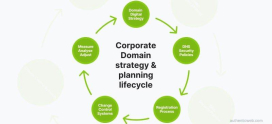
Creating an SEO-Friendly Website Structure
Creating a website that stands out in the crowded online space can feel a bit like crafting a unique recipe—a delicate balance of the perfect ingredients. If you’re eager to boost your website’s visibility and ensure that it attracts visitors rather than leaves them lost in the depths of cyberspace, mastering SEO-friendly website structure is your secret ingredient. But what does that mean, exactly?
Just like a well-organized library facilitates easy access to books, a well-structured website makes it easy for search engines and users to navigate through content. If you’re ready to transform your website into a user-friendly platform that ranks well in search results, you’re in the right place! Let’s journey together through the essentials of creating an SEO-friendly website structure.
Understanding the Basics of Website Structure
Think of your website structure as the architecture of a building. When well-planned, visitors can easily wander from room to room. Without a solid foundation and clear pathways, they’ll get lost. Here are the main components to consider:
- Hierarchy: Organize your content in a logical order, starting from broad categories and narrowing down to specific topics.
- Navigation: Ensure that users can easily find what they’re looking for—think of it as creating a clear map of your content.
- URLs: Use descriptive, keyword-rich URLs that reflect the content of the page.
Why an SEO-Friendly Structure Matters
Now you might be wondering, “Why does this even matter?” Well, an optimized website structure enhances the user experience, which is incredibly important for keeping visitors engaged. When they find what they need quickly, they are more likely to spend more time on your site. Plus, search engines like Google take website structure into account when ranking pages. A clear structure can improve your chances of appearing higher in search results. Isn’t that something worth striving for?
Components of an Effective Website Structure
Creating an effective website structure involves several essential components:
1. Building a Logical Hierarchy
Your website should have a clear hierarchy, similar to a tree where larger branches represent broader topics, and smaller branches dive into more specific subjects. For example, if you’re running a health and wellness blog, your main categories might be:
- Fitness
- Nutrition
- Mental Health
Each of these categories can then branch into sub-categories. For instance, under Nutrition, you could have:
- Healthy Recipes
- Dietary Tips
- Food Science
2. Using Clear Navigation Menus
Navigational menus should be straightforward. Picture a well-organized closet where every item has its designated place. An intuitive menu allows users to navigate smoothly. Main categories should be listed prominently, while subcategories can be nested under them. Keep it simple—don’t overload your navigation with too many options. Consider using drop-down menus for your subcategories to reduce clutter.
3. Crafting SEO-Friendly URLs
Basic URLs like ”example.com/page1″ don’t offer much information. Instead, opt for descriptive URLs like ”example.com/healthy-recipes.” Such URLs help both visitors and search engines understand what’s on that page. A good rule of thumb is to include relevant keywords in your URLs. But remember, simplicity is key!
4. Implementing a Sitemap
A sitemap acts as a roadmap, guiding search engines through your website’s structure. Most content management systems, like WordPress, automatically generate sitemaps. You can also create one manually and submit it to search engines via tools like Google Search Console. This step can significantly improve the chances of your pages being indexed efficiently!
Enhancing Internal Linking
Much like a spider’s web, internal linking connects various parts of your website, making it easy for users and search engines to jump from one page to another. Here’s how to optimize internal links:
- Contextual Links: Link to related content within your articles (e.g., linking a fitness article to a nutrition page).
- Navigation Links: Include essential links in your footer to guide users to important sections, such as contact information, about pages, etc.
- Anchor Text: Use descriptive text for your links, as this informs users about what to expect when they click on it.
Optimizing for Mobile Devices
As more people turn to mobile devices to browse the internet, having a mobile-friendly website is essential. If your website feels cluttered and challenging to navigate on a smaller screen, users may quickly leave. Ensure your design is responsive, meaning it adapts to any device. Here are some tips:
- Responsive Design: Choose themes or templates that adjust based on the screen size.
- Readable Font: Use larger fonts that are easy to read on mobile.
- Touch-Friendly: Make buttons larger and space them to avoid accidental clicks.
Secure Your Website
Security isn’t just about protecting user data—it’s also a significant factor in SEO. Google favors secure sites, meaning it’s essential to implement HTTPS. To do this, acquire an SSL certificate. When your website is secure, visitors will feel safe sharing information.
If you’re considering a hosting provider, look for one like DarazHost, which offers built-in security features and support for securing your website effectively. Investing in security is investing in credibility.
Customer Support and Website Management
Have you ever found yourself frustrated when trying to figure out how to fix a website issue? Good customer support can make all the difference. When choosing web hosting services, look for providers with excellent customer support, like DarazHost. They can assist you during those times when website structure adjustments or technical hiccups come up. Don’t overlook this aspect, as it can save you significant headaches down the road.
Analyzing and Improving Performance
Once you have your structure in place, it’s essential to track its performance and make adjustments as necessary. Tools like Google Analytics can provide insights into user behavior on your site. Are visitors finding what they need? How long are they staying? Use this data to enhance the user experience continually.
Creating Quality Content
Even the best structure won’t help you if the content is subpar. Quality content that’s engaging, informative, and valuable for your users can significantly boost your SEO efforts. Keep your audience in mind as you write, offering them solutions and answering their questions. Remember, every article or page should have a purpose.
The Power of Visuals
Words are powerful, but visuals can enhance understanding and engagement. Incorporate images, infographics, and videos to break up text and clarify concepts. They can also serve as additional content that boosts the SEO game. For example, blogs that include relevant images receive 94% more views than those without!
Conclusion
Creating an SEO-friendly website structure is like building a cozy home for your digital presence. If you give users a comfortable place to explore and find information, they’re more likely to stick around, come back, and even recommend you to others. From crafting an intuitive navigation system to employing strong internal linking and being mindful of mobile users, every detail counts.
FAQs
1. What is the best way to structure my website?
The best way to structure a website is to have a clear hierarchy, intuitive navigation, and descriptive URLs, all leading users seamlessly from broader topics to specific content.
2. How important is mobile optimization for SEO?
Mobile optimization is crucial for SEO, as search engines prioritize mobile-friendly websites due to the increasing number of users accessing the internet through their smartphones.
3. What role does internal linking play in SEO?
Internal linking helps search engines understand the structure of your website, makes it easier for users to navigate, and can improve your SEO by distributing page authority across your site.
4. How often should I update my website’s structure?
It’s good practice to review and update your website’s structure regularly, especially if you add new content or categories, to ensure it remains user-friendly and SEO-optimized.
5. Why should I choose a secure hosting service?
A secure hosting service is essential for protecting user data and enhancing your trustworthiness, which can positively impact your site’s SEO ranking.









